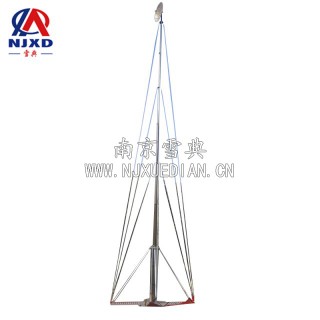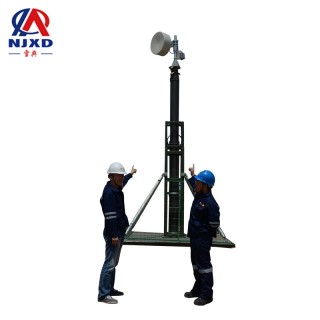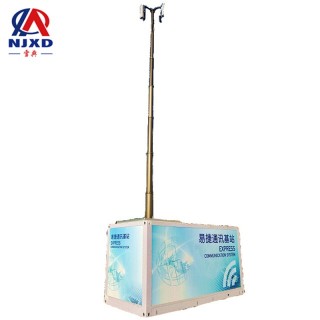NEWS
System composition of lifting antenna global mobile communication system
Time:2020-12-21 View:

System composition
GSM system mainly consists of four parts: mobile station (MS), mobile network subsystem (NSS), base station subsystem (BSS) and Operation and maintenance center (OMC).

Mobile Station (MS)
The mobile station is the equipment used by users in the public GSM mobile communication network, and is also the only equipment in the whole GSM system that users can directly contact. The types of mobile stations include not only handheld unit, but also vehicle-mounted and portable stations. With the development trend of digital handheld unit of GSM standard, which is further small, lightweight and adds functions, handheld unit users will account for a large proportion of the whole users.
Base station subsystem (BSS)
Base station subsystem (BSS) is the most direct basic component related to wireless cellular in GSM system. It is directly connected to the mobile station through the wireless interface, and is responsible for wireless transmission and reception and wireless resource management. On the other hand, the base station subsystem is connected with the mobile service Switching Center (MSC) in the network subsystem (NSS) to realize the communication connection between mobile users or between mobile users and fixed network users, transmit system signals and user information. Of course, we need to maintain and manage the BSS part and establish a communication connection between the BSS and the operation support subsystem (OSS).

Mobile network subsystem (NSS)
NSS consists of mobile service Switching Center (MSC), Home Location Register (HLR), visited location register (VLR), Authentication Center (AUC), device identification register (EIR), operation and maintenance center (OMC-S) and short message service center (SC). MSC is a functional entity that controls and exchanges traffic for MS located in its coverage area, and is also an interface entity between mobile communication network and other communication networks. It is responsible for call control, mobility management and radio resource management in the entire MSC area. VLR is a dynamic database that stores information about users entering its coverage area and call processing. In order to process incoming and outgoing calls of MS located in this coverage area, MSC needs to retrieve information from VLR. Usually, VLR and MSC are located in the same physical entity. HLR is a database for mobile user management. Each mobile user should register in the location register where he belongs. HLR mainly stores two types of information, one is business information about users, and the other is location information of users.
Operation and maintenance center (OMC)
Operation and maintenance center (OMC), also known as OSS or M2000, needs to complete many tasks, including mobile user management, mobile device management, and network operation and maintenance.

CATEGORY
NEWS
- Historical lifting antenna of global mobile communication system
- System composition of lifting antenna global mobile communication system
- Security requirements and technical characteristics of global mobile communication system lifting an
- Frequency band of lifting antenna global mobile communication system
- Emergency lifting mobile communication standard